Keeping with the crewel embroidery theme, if you’re looking for source books for designs or inspiration for your own designs, I thought I’d show you a couple books currently available that focus on crewel designs. Keep in mind, though, that the designs are not necessarily only for crewel work. They’d all be equally adaptable to surface embroidery of various types. You’ll see what I mean….
Frances Bradbury has written (or rather, drawn) several design books in different needlework techniques, but the two I’m focusing on here are specifically crewel: English Crewel Designs: 16th to 18th Centuries and Early American Crewel Design.
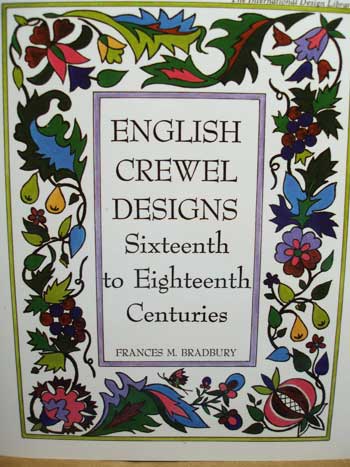
English Crewel Designs: 16th to 18th Centuries is a design source book. As such, you won’t find a lot of text herein. There are a couple pages at the beginning of the book that serve as introductory information, but that’s it. The rest of the book is devoted to designs – black and white drawings of crewel patterns taken from historical pieces.
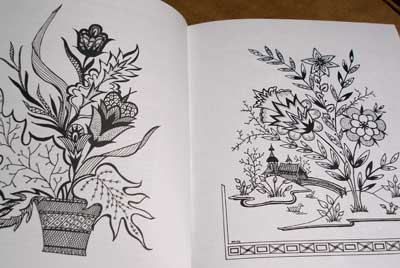
While there are no stitch suggestions in the book (and no stitch instructions), it isn’t hard to imagine what types of stitches would look good on the various designs. The designs have a good amount of shading and filling – they aren’t merely line drawings.
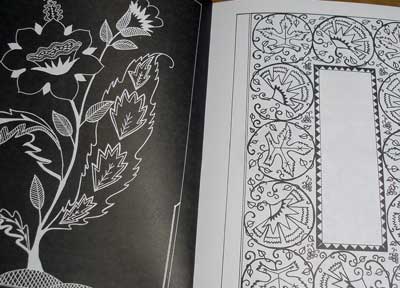
Some of the designs in the book are given as negative images, with black backgrounds and white lines. The majority of the designs, though, are delivered on white paper with black ink.
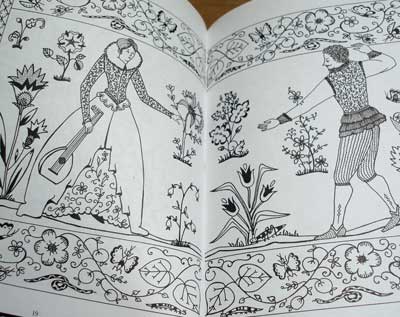
The designs are adaptable to other forms of embroidery. For example, this panel brings to mind stumpwork embroidery. Now, wouldn’t that be fun?!
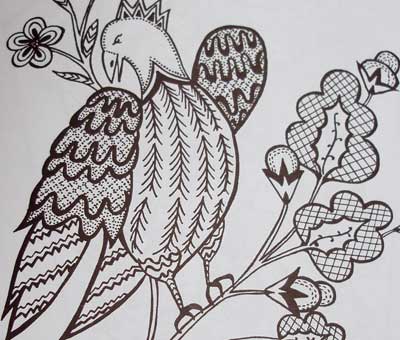
I did have a laugh at this fellow. This is such a simple treatment of the bird’s body. I probably should’ve looked at this before I marked up my rooster yesterday! I added scallops all over the main part of the rooster’s body – in pen, so I don’t really have a choice in embroidering them! Ah, well – live and learn!
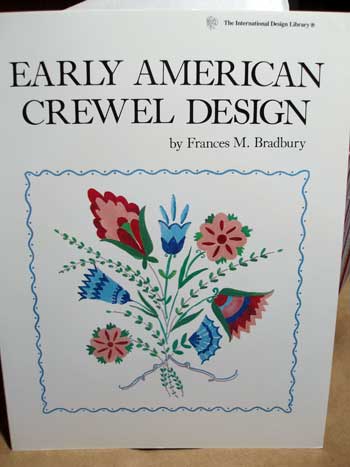
The second sourcebook for crewel designs by the same author is Early American Crewel Design.
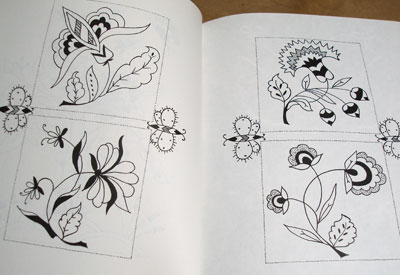
The designs in this book are noticeably different from the designs in the previous book. They’re not quite as elaborate. I like these four designs here – they’re very much like the “smalls” I’ve been working on recently.
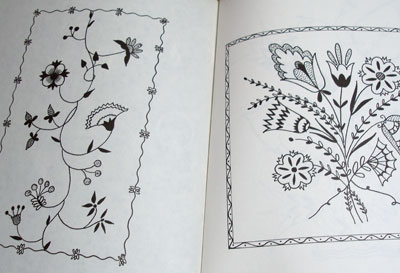
Even the more elaborate designs in the book are relatively simple – and I think I like them this way. Both books definitely present a different “look” of crewel work, though the designs have obvious things in common – stylized flowers and leaves, woodland animals, and so forth.
The books are not huge, extensive sourcebooks, but for the price, they’re nice design books and good to have on hand for inspiration and ideas. Both books are available through Amazon:







Yes, I laughed at the bird, too! He looks like he's got little bird feet tracks all over his belly!
I'll probably order this book. Nice to have around for design patterns.
Hi, Laura –
I like both books, for different reasons. I like the English one, because the designs are easily convertible to other types of embroidery typical of that historic look. I like the American one, because the designs are simple. They remind me of those "smalls," which are fun to work simply because they're small!
They're nice resources, as long as you don't expect anything from them but designs!
MC
Yes! More two for a too long wishing list!
I'm tempted to repeat a former reader (sorry can't remember her name): don't make all things you write about looking so interesting 😉
Seriously the designs are pretty – through your pictures they have some resemblance with Castelo Branco designs, have they?
Hello, Mary!
I'm glad you're talking about crewel work! I am planning on doing your long and short stitch lessons/designs in crewel. I'm thinking it might be good to enlarge the design somewhat, since crewel (Appleton, in my case) is thicker than floss. I'm not sure how much to enlarge; I'm guessing that it should be only a little bit! What do you think?
Best returns of the new year to you!
Didi
amiga que feliz me siento al ver que en este mundo que son pocas las personas que nos gusta compartir , todo lo que Dios nos ayuda aprender , te cuento que yo hago bordados es :
punto cruz , bordado guatemalteco , bordado tradicional , y no sabes lo que yo deseaba poder aprender el bordado crewel para hacer cuadros para vender y ayudarme en la compra de mis medicinas y ayudar a mi hogar que Dios te bendiga amiga , ya pronto si Dios quiere voy a abrir una pagina para compartir los bordados y sus puntadas , yo hago cuadros pero quiero y es mas rentable en bordado crewel si deseas aprender el bordado guatemalteco estoy a tus ordenes y las que asi lo desean ,
bendiciones y abrazos por miles le mando estoy a tus ordenes